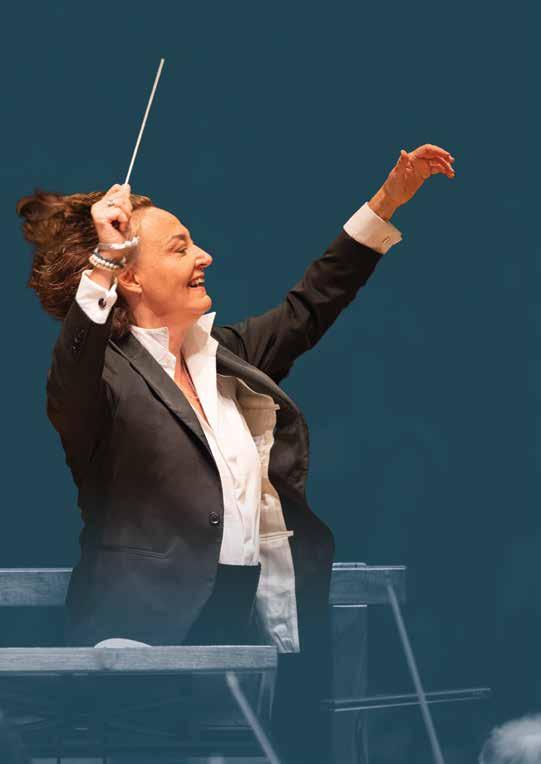

ATLANTA SYMPHONY ORCHESTRA OCTOBER 2023

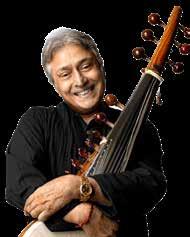
aso.org | @AtlantaSymphony | facebook.com/AtlantaSymphony OCTOBER 2023 INTRODUCTIONS In Tune 4 Music Director 7 ASO Leadership ................... 8 ASO Musicians ................... 10 NOTES ON THE PROGRAM OCTOBER 5,7 .................... 22 OCTOBER 19, 21 32 OCTOBER 25 42 DEPARTMENTS ASO Support 52 Henry Sopkin Circle 56 ASO Staff ........................ 57 Woodruff Circle 61 Benefactor Circle 62 Page 14 Pairing East and West Creates Perfect Harmony encoreatlanta.com | 1
Our audience is your audience.
Advertise with Encore and reach a targeted group of performing arts lovers.
ENCOREATLANTA.COM
PUBLISHER Brantley Manderson brantley@encoreatlanta.com
SENIOR ACCOUNT DIRECTOR CHARLOTTE Hila Johnson hila@encorecharlotte.com
EDITOR IN CHIEF
Robert Viagas robert@encoreatlanta.com
GRAPHIC DESIGNER
Tamara Hooks tamara@encoreatlanta.com
DIGITAL MEDIA DIRECTOR



Jennifer Nelson jennifer@encoreatlanta.com
WRITER
Keith Loria
ENCORE ATLANTA is published monthly by B2 MEDIA, LLC. P.O. Box 1377 | Columbus, Georgia 31902 Phone 678-837-4004
Copyright © 2023 Encore Atlanta. All rights reserved. Reproduction in whole or in part is strictly prohibited. Encore Atlanta is a registered publication of B2 Media, LLC. The publisher shall not be liable for failure to publish an ad, for typographical errors, or errors in publication. Publisher reserves the right to refuse any advertising for any reason and to alter advertising copy or graphics deemed unacceptable for publication.
CONTACT Hila Johnson 305-978-2922
hila@encorecharlotte.com
As one of the region’s largest Marketing Solutions Providers, Communicorp handles everything from print to digital to emerging technologies like clickable print or eCommerce storefronts. We guide clients through the maze of new marketing technologies and methodologies with a unique approach that always looks beyond yesterday’s solutions. Based in Columbus, GA, Communicorp is a wholly-owned subsidiary of Aflac. To learn more about our award-winning solutions, visit Communicorp.com.
encore Printed exclusively by Communicorp
| encore 2

ASO | IN TUNE
DEAR FRIENDS OF THE ATLANTA SYMPHONY ORCHESTRA,
We’re so glad to welcome you back to Symphony Hall!
The Symphony Hall and Atlanta Symphony Orchestra schedule started with a bang in September with our popular “Movies in Concert” series, video games and jazz standards with the fine musicians of our Orchestra. We welcomed thousands to our inaugural HBCU AccessFest. The Orchestra played concerts for thousands of Atlanta Public School students. And we celebrated the opening of the season with thousands of our friends with an outdoor concert in Piedmont Park on September 30th
Artistically, we are diving into exciting territory as we start the second season with our extraordinary Music Director, Nathalie Stutzmann, fresh from a triumph at the legendary Bayreuth Festival this summer. Already she is making her mark in Atlanta with repertoire that highlights our stellar chorus (just wait until you hear them sing Brahms in early November), and the Orchestra will be recording an album of Dvořák in November for later release on the Warner Classics label.
Later this month (October 25), the sensational violinist Joshua Bell joins the ASO in a program that includes a new work, The Elements, which premiered only a few weeks earlier in New York’s Geffen Hall. This special concert, along with the arrival of the Amjad Ali Khan family for the ASO debut of Samaagam, a sarod concerto (October 19 and 21), makes for an energizing fall filled with surprises for even seasoned classical music fans.
Samaagam is a Punjabi word meaning “gathering,” and we can’t think of a better expression of why we do what we do here at the ASO. Let’s gather together to experience live music. That’s what this is all about.
With gratitude,
Jennifer Barlament, Executive Director
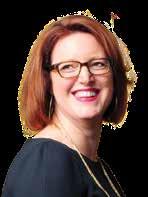
P.S. As you think about ways to deepen your social engagement with the ASO, check out our many affinity groups, especially BRAVO For young professionals and IN UNISON for our LGBTQIA+ community. We’ll see you at Atlanta PRIDE in October, too.

| encore 4
TODD HALL


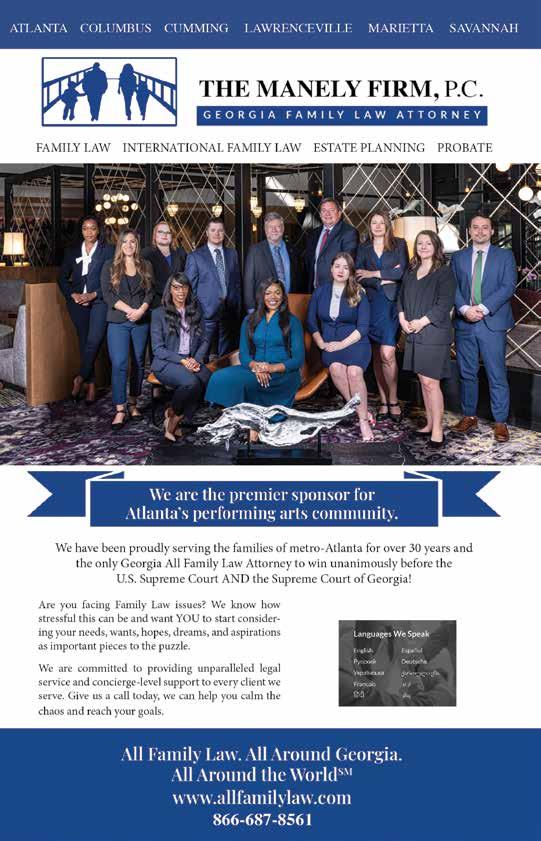
ASO | NATHALIE STUTZMANN
Nathalie Stutzmann is the Music Director of the Atlanta Symphony Orchestra and the second woman in history to lead a major American orchestra. She is also the Principal Guest Conductor of The Philadelphia Orchestra.

When Nathalie made her spectacular debut at the 2023 Bayreuth Festival leading Wagner’s Tannhäuser, BR Klassik observed having “never experienced such a standing ovation at a pit debut in Bayreuth.” Last season also saw her acclaimed debut at the Metropolitan Opera with productions of both Die Zauberflöte and Don Giovanni that The New York Times declared “the coup of the year.”
During the 23-24 season, she leads the Atlanta Symphony in a West Coast tour and twelve programs spanning some of her favorite core repertoire from Beethoven, Schumann, Brahms and Ravel through to the large symphonic forces of Mahler, Strauss and Tchaikovsky, along with a Bruckner festival marking the composer’s 200th anniversary. With The Philadelphia Orchestra, she returns to New York for her
Concerto Recording of the Year ” for her recording of Glière and Mosolov Harp concertos with Xavier de Maistre and her 2022 recording of the complete as “a brilliant collaboration that Nathalie Stutzmann is an exclusive recording artist for Warner Classics/Erato.
As one of today’s most esteemed contraltos, she has made more than 80 recordings and received the most prestigious awards. Recognized for her significant contribution to the arts, Nathalie was named “Chevalier de la Légion d’Honneur,” France’s highest honor; and “Commandeur dans l’Ordre des Arts et des Lettres” by the French government.
encoreatlanta.com | 7
AUDRA MELTON
ASO | LEADERSHIP | 2023/24 Board of Directors
OFFICERS
Patrick Viguerie chair
Janine Brown immediate past chair
Bert Mills treasurer
Angela Evans secretary
DIRECTORS
Phyllis Abramson
Keith Adams
Juliet M. Allan
Susan Antinori
Andrew Bailey
Keith Barnett
Jennifer Barlament*
Paul Blackney
Zachary Boeding*
Janine Brown
Benjamin Q. Brunt
Betsy Camp
S. Wright Caughman, M.D.
Lisa Chang
Susan Clare
Russell Currey
Sheila Lee Davies
Erroll Brown Davis, Jr.
Carlos del Rio, M.D. FIDSA
Lisa DiFrancesco, M.D.
Sloane Drake
Lynn Eden
Yelena Epova
Angela Evans
Craig Frankel
Sally Bogle Gable
Anne Game
Rod Garcia-Escudero
Sally Frost George
Robert Glustrom
Bonnie B. Harris
Charles Harrison
Tad Hutcheson, Jr.
Roya Irvani
Joia Johnson
Chris Kopecky
Susan Antinori vice chair
Lynn Eden vice chair
James Rubright vice chair
Randolph J. Koporc
Carrie Kurlander
James H. Landon
Donna Lee
Sukai Liu
Kevin Lyman
Deborah Marlowe
Shelley McGehee
Arthur Mills IV
Bert Mills
Molly Minnear
Hala Moddelmog*
Anne Morgan
Terence L. Neal
Galen Lee Oelkers
Dr. John Paddock
Margie Painter
Howard D. Palefsky
Barbara N. Paul
BOARD OF COUNSELORS
Doug Reid
James Rubright
William Schultz
Charles Sharbaugh
Fahim Siddiqui
W. Ross Singletary, II
John Sparrow
Elliott Tapp
Brett Tarver
Maria Todorova
S. Patrick Viguerie
Kathy Waller
Chris Webber
John B. White, Jr.
Richard S. White, Jr.
Kevin E. Woods, M.D., M.P.H.
Neil Berman
Rita Bloom
John W. Cooledge, M.D.
John R. Donnell, Jr.
Jere A. Drummond
Carla Fackler
Charles B. Ginden
John T. Glover
Dona Humphreys
Aaron J. Johnson, Jr.
Ben F. Johnson, III
James F. Kelley
Patricia Leake
Karole F. Lloyd
LIFE DIRECTORS
Howell E. Adams, Jr.
*Ex-Officio Board Member
Connie Calhoun
Meghan H. Magruder
Penelope McPhee
Patricia H. Reid
Joyce Schwob
John A Sibley, III
H. Hamilton Smith
G. Kimbrough Taylor, Jr.
Michael W. Trapp
Ray Uttenhove
Chilton Varner
Adair M. White
Sue Sigmon Williams
C. Merrell Calhoun
Azira G. Hill
aso.org | @AtlantaSymphony | facebook.com/AtlantaSymphony
| encore 8

ASO | 2023/24 Musician Roster
Nathalie Stutzmann music director
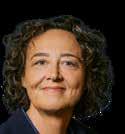
The Robert Reid Topping Chair
FIRST VIOLIN
David Coucheron
concertmaster
The Mr. & Mrs. Howard R. Peevy Chair
Justin Bruns associate concertmaster
The Charles McKenzie Taylor Chair
Vacant
assistant concertmaster
Jun-Ching Lin
assistant concertmaster
Anastasia Agapova
acting assistant
concertmaster
Kevin Chen
Carolyn Toll Hancock
The Wells Fargo Chair
John Meisner
Christopher Pulgram
Juan R. Ramírez Hernández
Olga Shpitko
Kenn Wagner
Lisa Wiedman Yancich
Sissi Yuqing Zhang
SECTION VIOLIN ‡
Judith Cox
Raymond Leung
The Carolyn McClatchey Chair
Sanford Salzinger
SECOND VIOLIN
Vacant principal
The Atlanta Symphony Associates Chair
Sou-Chun Su
acting / associate principal
The Frances Cheney Boggs Chair
Jay Christy acting associate / assistantprincipal
Dae Hee Ahn
Robert Anemone
Noriko Konno Clift
David Dillard
Eun Young Jung
Eleanor Kosek
Yaxin Tan
Rachel Ostler
VIOLA
Zhenwei Shi principal
The Edus H. & Harriet H.
Warren Chair
Paul Murphy
associate principal
The Mary & Lawrence Gellerstedt Chair
Catherine Lynn assistant principal
Marian Kent
Yang-Yoon Kim
Yiyin Li
Lachlan McBane
Jessica Oudin
Madeline Sharp
CELLO
Vacant principal
The Miriam & John Conant Chair
Daniel Laufer acting / associate principal
The Livingston Foundation Chair
Karen Freer acting associate / assistant principal
Players in string sections are listed alphabetically
Thomas Carpenter
Joel Dallow
The UPS Foundation Chair
Ray Kim
Isabel Kwon
Nathan Mo
Brad Ritchie
Denielle Wilson
BASS
Joseph McFadden principal
The Marcia & John Donnell Chair
Gloria Jones Allgood associate principal
The Lucy R. & Gary Lee Jr. Chair
Karl Fenner
Michael Kenady
The Jane Little Chair
Michael Kurth
Nicholas Scholefield
Daniel Tosky
FLUTE
Christina Smith principal
The Jill Hertz Chair
The Mabel Dorn Reeder Honorary Chair
Robert Cronin associate principal
C. Todd Skitch
Gina Hughes
PICCOLO
Gina Hughes
aso.org | @AtlantaSymphony | facebook.com/AtlantaSymphony
| encore 10
William R. Langley
interim associate conductor & conductor of the atlanta symphony youth orchestra
The Zeist Foundation Chair
OBOE
Elizabeth Koch Tiscione principal
The George M. & Corrie Hoyt Brown Chair
Zachary Boeding associate principal
The Kendeda Fund Chair
Samuel Nemec*
Jonathan Gentry
Emily Brebach
ENGLISH HORN
Emily Brebach
CLARINET
Jesse McCandless principal
The Robert Shaw Chair
Ted Gurch*
associate principal
Marci Gurnow
acting associate principal
Alcides Rodriguez
E-FLAT CLARINET
Ted Gurch*
BASS CLARINET
Alcides Rodriguez
BASSOON
Vacant principal
The Abraham J. & Phyllis Katz Foundation Chair
Anthony Georgeson

acting / associate principal
Laura Najarian
Juan de Gomar
CONTRA-BASSOON
Juan de Gomar
Norman Mackenzie director of choruses
The Frannie & Bill Graves Chair
HORN
Ryan Little principal
The Betty Sands Fuller Chair
Jack Bryant
Kimberly Gilman
Bruce Kenney
TRUMPET
Vacant principal
The Madeline & Howell
Adams Chair
Michael Tiscione
acting / associate principal
Anthony Limoncelli*
Mark Maliniak
William Cooper
TROMBONE
Vacant principal
The Terence L. Neal Chair, Honoring his dedication & service to the Atlanta Symphony Orchestra
Nathan Zgonc
acting / associate principal
The Home Depot Veterans Chair
Jason Patrick Robins
BASS TROMBONE
Chance Gompart
Jordan Milek Johnson Fellow
TUBA
Michael Moore principal
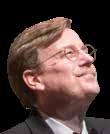
The Delta Air Lines Chair
Joshua Williams fellow
Zeist Foundation ASO Fellowship Chair
TIMPANI
Mark Yancich principal
The Walter H. Bunzl Chair
Michael Stubbart
assistant principal
PERCUSSION
Joseph Petrasek principal
The Julie & Arthur Montgomery Chair
Michael Jarrett
assistant principal
The William A. Schwartz Chair
Michael Stubbart
The Connie & Merrell Calhoun Chair
HARP
Elisabeth Remy Johnson principal
The Sally & Carl Gable Chair
KEYBOARD
The Hugh & Jessie Hodgson Memorial Chair
Peter Marshall †
Sharon Berenson †
LIBRARY
Joshua Luty principal
The Marianna & Solon Patterson Chair
Sara Baguyos associate principal librarian
‡ Rotates between sections | * Leave of absence | † Regularly engaged musician
Members of the Atlanta Symphony Orchestra
The Atlanta Symphony Orchestra Advisory Council is a group of passionate & engaged individuals who act as both ambassadors & resources for the ASO Board & staff. The Atlanta Symphony Orchestra extends heartfelt gratitude to the members listed on this page.

2023/24 CHAIRS
Jane Morrison advisory council chair
Justin Im internal connections task force co-chair
Robert Lewis, Jr. internal connections task force co-chair
Frances Root patron experience task force chair
Eleina Raines
diversity & community connections task force co-chair
Otis Threatt
diversity & community connections task force co-chair
MEMBERS
Dr. Marshall & Stephanie Abes
Krystal Ahn
Paul & Melody Aldo
Kristi & Aadu Allpere
Evelyn Babey
Asad & Sakina Bashey
Herschel Beazley
Meredith W. Bell
Carol Brantley & David Webster
Tracey Chu
Donald & Barbara Defoe
Paul & Susan Dimmick
Bernadette Drankoski
John & Catherine Dyer
Mary Ann Flinn
Bruce Flower
John Fuller
Tucker Green
Caroline Hofland
Justin Im
Baxter Jones & Jiong Yan
Jon Kamenear
Brian & Ann Kimsey
Jason & Michelle Kroh
Scott Lampert
Dr. Fulton Lewis III & Mr. Neal Rhoney
Robert Lewis, Jr.
Eunice Luke
Erin Marshall
Pam Martin
Belinda Massafra
Erica McVicker
Berthe & Shapour
Mobasser
Bert Mobley
Caroline & Phil Moïse
Sue Morgan
Jane Morrison
Gary Noble
Regina Olchowski
Bethani Oppenheimer
Chris Owes
Ralph Paulk
Fay & Ann Pearce
Eliza Quigley
Eleina Raines
Vicki Riedel
Felicia Rives
Frances A. Root
Tiffany & Rich Rosetti
Thomas & Lynne Saylor
Beverly & Milton Shlapak
Suzanne Shull
Baker Smith
Cindy Smith
Peter & Kristi Stathopoulos
Tom & Ani Steele
Kimberly Strong
Stephen & Sonia Swartz
George & Amy Taylor
Bob & Dede Thompson
Otis Threatt Jr.
Cathy Toren
Roxanne Varzi
Robert & Amy Vassey
Juliana Vincenzino
Nanette Wenger
Christopher Wilbanks
Kiki Wilson
Taylor Winn
Camille Yow
For more information about becoming an Advisory Council member, please contact Cheri Snyder at cheri.snyder@atlantasymphony.org or 404.733.4904.
aso.org | @AtlantaSymphony | facebook.com/AtlantaSymphony
ASO | SEASON SPONSORS
We are deeply grateful to the following leadership donors whose generous support has made the Atlanta Symphony Orchestra's season possible.

aso.org | @AtlantaSymphony | facebook.com/AtlantaSymphony
| encore 20

Concerts of Thursday, October 5, 2023 8:00pm
Saturday, October 7, 2023
8:00pm
NATHALIE STUTZMANN, conductor
XAVIER DE MAISTRE, harp
Thursday’s concert is dedicated to SALLY & CARL GABLE in honor of their 60 years of support to the Atlanta Symphony Orchestra.
Pyotr Ilyich Tchaikovsky (1840–1893)
Overture to The Queen of Spades, Op. 68 (1890) 4 MINS
Polonaise from Eugene Onegin, Op. 24 (1878)
5 MINS
ALEKSANDR VASIL’YEVICH MOSOLOV (1900–1973)
Harp Concerto (1939) 33 MINS
I. Sostenuto
II. Nocturne
III. Gavotte
IV. Toccata
Xavier de Maistre, harp
INTERMISSION
PYOTR ILYICH TCHAIKOVSKY (1840–1893)
20 MINS
Symphony No. 4 in F Minor, Op. 36 (1878) 45 MINS
I. Andante sostenuto
II. Andantino in modo di canzona
III. Scherzo: Pizzicato ostinato
IV. Finale: Allegro con fuoco
Saturday’s concert is dedicated in memory of SHEILA TSCHINKEL for her passionate support of the Atlanta Symphony Orchestra.
The use of cameras or recording devices during the concert is strictly prohibited. Please be kind to those around you and silence your mobile phone and other hand-held devices.
aso.org | @AtlantaSymphony | facebook.com/AtlantaSymphony | oct5/7
22
by Noel Morris Program Annotator
Pyotr Ilyich Tchaikovsky
When Pyotr Ilyich Tchaikovsky was a boy, the idea of going to music school and becoming a professional musician was not a thing. He spent nine years at the School of Jurisprudence in St. Petersburg and took a job as a clerk at the Ministry of Justice. As a civil servant, the twenty-something Tchaikovsky leaped into the St. Petersburg nightlife. Conceivably, he might have squandered his talents as an urban socialite if it hadn’t been for two brothers named Rubinstein.
As kids, Anton and Nikolai Rubinstein showed remarkable ability at the piano, and their parents arranged for them to study in Western Europe. They returned to Russia as adults, where Anton founded the St. Petersburg Conservatory in 1862. Nikolai founded the Moscow Conservatory in 1866.
Tchaikovsky graduated from the first class in St. Petersburg and taught the first class in Moscow. His move to Moscow allowed him to settle down and write music. Soon, he produced his First Symphony and began work on an opera.
Through the 1870s, Tchaikovsky ascended the ranks. Musicians wanted to perform his music, and audiences wanted to hear it. But—always—he had his detractors, and that affected him. He fell into a pattern of loving his ability to express himself through music while hating his works after the fact. Socially, he remained close to his siblings and traveled extensively. At the same time, he dallied with various lovers until 1877, when he announced his intention to marry.
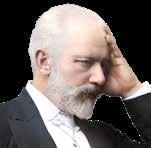
Antonina Milyukova had met the composer through a mutual friend and eventually wrote Tchaikovsky a letter professing her love. It stirred in him some long-held notions of duty to family and society.
“I went one evening to my future wife and told her frankly that I could not love her but that I would be a devoted and grateful friend.” Thus, Pyotr Ilyich Tchaikovsky got engaged three days after their first meeting.
With the wedding set for July 18, 1877, he left Antonina behind and headed to his sister’s estate in Ukraine. Absent from his bride-to-be, he mused about how “peaceful and happy” his new life would be. And perhaps it was lucky that he did because he sat down to write the opera Eugene Onegin.
This anticipation of domestic tranquility shows his more pragmatic
notesontheprogram |
23
WIKIMEDIA
side. Just six months before, he had fallen for Josef Kotek, a gifted violin student at the Moscow Conservatory, and the composer wrote about it in words worthy of daytime television.
“My only need,” said the composer, “is for him to know that I love him endlessly.” Marriage to Antonina proved disastrous. Despite endless speculation, we only know that he didn’t marry for love. The two were practically strangers. Josef Kotek, likely an exlover, stood as a witness. After three weeks, Tchaikovsky couldn’t bear to be in the same room with his bride and spiraled into panic and depression. He left her for the rest of the summer.
He returned to his sister’s estate in Ukraine, where he orchestrated parts of the Fourth Symphony. In the fall, he returned to his wife for two weeks before declaring the marriage unworkable. At the same time, he developed an intense bond with another woman.
Overture to The Queen of Spades, Op. 68
This overture is scored for piccolo, two flutes, two oboes, two clarinets, two bassoons, four horns, two trumpets, three trombones, tuba, timpani and strings.
“I’m depressed,” Tchaikovsky wrote to his brother Modest. “Most likely, it’s homesickness—the desire to be at home.” But his itinerant life had left him without one. He was a victim of his own success, traveling from city to city, conducting his works and making public appearances. Having spent his free time as a guest at various estates, he longed to own a little house and a garden. In February 1890, he wrote to his friend Yuliya Shpazhinskaya from Florence, Italy.
“You know how in the first half of this winter, I had to strain my strength unnaturally, constantly wandering between St. Petersburg and Moscow, spending the whole day now at a rehearsal, now at a concert, straining all my strength and abilities to the utmost degree. It all ended with me going from fatigue to utter stupefaction and becoming afraid of something nasty, like madness or even worse. On the other hand, I gradually began to feel an urgent need to take up, in the form of recreation, my real business, that is, writing.”
Two months later, he sent her an update: he’d written The Queen of Spades.
“I had completely lost my appetite, sleep, cheerful state of mind, in a word, all the attributes of health,” he wrote. “But I accomplished a simple feat, that is, in seven weeks, I wrote a big opera.”
aso.org | @AtlantaSymphony | facebook.com/AtlantaSymphony
| encore 24
These are the first ASO performances

Tchaikovsky turned to the great Russian writer Alexander Pushkin for source material. It started with his brother Modest Tchaikovsky, who wrote a libretto on the subject for the composer Nikolai Klenovsky. Eventually, Klenovsky backed out, and Pyotr Ilyich took up the project.
Pushkin’s tale offers lots of themes that have currency today—young lovers, greed, a ghost, and a gambling addiction. For the composer, the male lead, Hermann, possesses many attractive qualities despite serious flaws (murder, deception, obsessive behavior).
“When I got to the death of Hermann and this concluding chorus, I was so sorry for Hermann that I began to sob,” Tchaikovsky beamed. “This crying lasted a terribly long time and transformed itself into a mild hysteria of a very pleasant nature.”
The Queen of Spades debuted in St. Petersburg in December of 1890. Polonaise from Eugene Onegin, Op. 24
First and most recent ASO performances: December 14–17, 1978
Sung Kwak, conductor
This polonaise is scored for two flutes, two oboes, two clarinets, two bassoons, four horns, two trumpets, three trombones, timpani and strings.
Eugene Onegin still surprises audiences for what it’s not: there’s no melodrama; it’s not exotic. It’s not a spectacle, nor is it action-packed.
“How glad I am to be free of Egyptian princesses, pharaohs, poisonings, and stilted effects of all kinds,” the composer quipped. For Tchaikovsky, this was an opportunity to “convey through music everyday, simple, universally human emotions, far removed from anything tragic or theatrical.”
By 1877, Pyotr Ilyich Tchaikovsky was among the most celebrated composers in the world. He lived under a spotlight, which (not unlike today) generated lots of opinions. In this instance, he ignored them. Shaking off pressures from administrators, impresarios and well-meaning busybodies, he simply wrote what he wanted.
Eugene Onegin was a tale known by everyone in Tchaikovsky’s universe—a classic written in verse by Alexander Pushkin and first experienced as a serial novel between 1825 and 1832. Because the story deals with the internal struggles (which are admittedly tricky to show onstage), Tchaikovsky backed away from calling it an opera, instead calling it “lyrical scenes.”
Eugene Onegin is Tchaikovsky’s private rebellion against the theater scene as he knew it. Instead of bowing to the demands of directors
aso.org | @AtlantaSymphony | facebook.com/AtlantaSymphony
| encore 26
and impresarios, he staged its first performance in an environment he could control: the Moscow Conservatory.

Psychologically, the opera aligned with events in the composer’s life. The story’s heroine, Tatiana, is a serious and bookish girl who falls in love with the title character. Famously, she stays up one night to compose a love letter (the famous letter scene) and sends it to Onegin. He dismisses the overture and breaks her heart, only to regret it later.
Tchaikovsky composed the opera during his brief engagement to Antonina Milyukova, an admirer who had written him just such a letter. Three days after their meeting, the composer popped the question and left town to visit his sister. There, at a rural estate in Ukraine, he wrote Eugene Onegin, basking in the noble spirit of the young, idealistic opera character. It’s easy to see how a girl of his imagination might become conflated with the one who was waiting to marry him back in Moscow.
In the opera, Tchaikovsky’s famous polonaise opens Act III, a grand ball that takes place years after the letter scene. From across the room, Onegin spies Tatiana, now a poised society lady and wife of a prince. Finally, Onegin realizes he’s made a tragic and irreversible mistake.
Harp Concerto
In addition to the solo harp, this concerto is scored for two flutes (one doubling piccolo), two oboes, two clarinets, two bassoons, four horns, two trumpets, three trombones, timpani and strings.
On YouTube, there’s a video of Metallica and a symphony orchestra playing a song called “The Iron Foundry.” The music is crunchy and brutal, simulating the sound of heavy machinery. It is the most famous piece written by Alexander Mosolov. Mosolov was a futurist, a renowned member of the Russian avant-garde through the 1920s, when artists broke with the past and pushed boundaries of aesthetics in search of modern expression. Such artistic freedom wouldn’t last.
In 1932, the Soviet Union, under Joseph Stalin, issued guidelines for Soviet literature, which then spilled into other modes of artistic expression. According to Andrei Zhdanov, Chief of the Central Committee’s Propaganda Department, “Socialist Realism demands of the artist the truthful, historically concrete representation of reality in its revolutionary development. Moreover, the truthfulness and historical concreteness of the
WIKIMEDIA encoreatlanta.com | 27
These are the first ASO performances.
artistic representation of reality must be linked with the task of ideological development and education of workers in the spirit of socialism.”
What was, in essence, a jumble of words confused artists and officials to tragic effect. With Zhdanov’s proclamation came a series of apparatchiks and dilettantes tasked with enforcing compliance; a great purge of artists and intellectuals followed. Mosolov dodged the bullet—but barely.
Mosolov was born in Kyiv but moved to Moscow at age 3 with his family. Although he lost his father at 5, his home life was stimulating and cosmopolitan. His mother was a professional singer who moved in artistic circles and married a painter. He grew up speaking Russian, German and French and often made trips to Europe, at least until the advent of World War I.
When the Bolsheviks came to power, Mosolov volunteered for the Red Army’s First Cavalry Regiment and was twice decorated. By 1921, he displayed symptoms of PTSD and returned to civilian life. He enrolled at the Moscow Conservatory to study with Nikolai Myaskovsky and Reinhold Glière.
In the 1930s, Mosolov developed an interest in folk music and took trips to Central Asia to collect folksongs (so far, so good, as far as the Soviet arbiters were concerned). But then he got a little too creative. Using the folk melodies as a foundation, he layered them with a more complex, polytonal texture and ran afoul of Party officials. He wrote a letter to Stalin, asking for leniency, and did more folksong collecting as a form of rehabilitation. But the noose tightened when he got into a bar fight in 1936. On November 4, 1937, he was arrested as a counter-revolutionary and sentenced to eight years in a gulag. Off he went until July of 1938, when Glière and Myaskovsky successfully interceded. With his sentence reduced to five years of exile, Mosolov altered his musical style, taking a sharp turn away from the radicalism of his youth.
He wrote his Harp Concerto in 1939 as a “response” to the lushly Romantic harp concerto composed by his former teacher Reinhold Glière. At the time, Mosolov’s piece received only a partial performance. It sat on a shelf for another 80 years until the official premiere in 2019.
Harpist Xavier de Maistre and Atlanta Symphony Orchestra Music Director Nathalie Stutzmann recorded both the Mosolov and Glière concertos for Sony Classics.
aso.org | @AtlantaSymphony | facebook.com/AtlantaSymphony
| encore 28
Symphony No. 4 in F Minor, Op. 36
Symphony No. 4 is scored for piccolo, two flutes, two oboes, two clarinets, two bassoons, four horns, two trumpets, three trombones, tuba, timpani, percussion and strings.
First ASO performance: January 30, 1949
Henry Sopkin, conductor
Most recent
ASO performances: March 7-9, 2019
Mother of 11 children, Nadezhda von Meck stood by her husband for richer and for poorer (he started off poor and built a railroad empire). He died in 1876. Now in control of a considerable fortune, Nadezhda pursued things that struck her fancy—Pyotr Ilyich Tchaikovsky being one of them. The violinist Josef Kotek arranged an introduction, and she and the composer became pen pals. Taking special care never to meet face-to-face, the two developed a deeply personal and gratifying friendship. She became his muse and benefactress (and a great source of letters for future music historians). With her financial support, Tchaikovsky soon quit teaching and focused on composition.
Henrik Nánási, conductor
He composed his Fourth Symphony before, during and after his belly flop into marital discord.
“[I have been] engrossed in a symphony, which I began to write during the winter,” he declared to von Meck. “I find that now my nerves are frayed and irritable when I am distracted from the symphony, which progresses with some difficulty.”
On June 8, a few days after he got engaged, he wrote to von Meck, “The symphony is finished, i.e., in outline. By the end of the summer, it should be scored.” Through June, he broke away from the piece to write his opera Eugene Onegin. Later that summer, he returned to the symphony while exiled from his new wife and grew closer to the woman he would never meet.
“Our symphony is progressing a little,” he wrote to her. “I will take particular care when orchestrating the first movement— it is very long and complicated, yet it is also, in my opinion, the best movement. The remaining three are much simpler and orchestrating them will be very enjoyable. The Scherzo employs a new orchestral effect, which I have designed myself”— referencing the pizzicato (plucked strings) movement.
In February of 1878, Nikolai Rubinstein conducted the symphony’s world premiere. Afterward, von Meck begged the composer to tell her the story behind the music. His response was effusive.
encoreatlanta.com | 29
He referred to the introduction as the “seed of the whole symphony …. This is Fate: this is that fateful force that prevents the impulse toward happiness from attaining its goal, which jealously ensures that peace and happiness shall not be complete and unclouded, which hangs above the head like the sword of Damocles, unwaveringly, constantly poisoning the soul. It is an invincible force that can never be overcome—merely endured, hopelessly.”
In Tchaikovsky’s words, the symphony progresses through life’s ups and downs until the finale, where he comes to terms with Fate: “If within yourself you find no reasons for joy, then look at others. Go out among the people. See how they can enjoy themselves, surrendering themselves wholeheartedly to joyful feelings.”
XAVIER DE MAISTRE, HARP
Xavier de Maistre is one of today’s leading harpists and a profoundly creative musician. As a fierce champion of his instrument, he has broadened the harp repertoire, commissioning new work from composers. He also creates transcriptions of important instrumental repertoire. This musical vision has led him to work with conductors including Sir André Previn, Sir Simon Rattle, Riccardo Muti, Daniele Gatti, Philippe Jordan, James Gaffigan, and Daniel Harding. He has been invited by orchestras such as Chicago, Montreal, City of Birmingham, NHK, Swedish and Finnish Radio Symphony orchestras; Los Angeles, London, St Petersburg, Oslo and China Philharmonic orchestras; Tonhalle-Orchester Zürich, Mozarteum Orchester Salzburg, Orquestra Sinfônica do Estado de São Paulo and Orchestre de la Suisse Romande. In his native France he has worked with Orchestre de Paris, the national orchestras of France and Lyon; and recitals in Paris and Lille operas, among other places. Parallel to his orchestral concerts, de Maistre is passionate about chamber music and regularly puts together original recital projects. In 2020 he started a new collaboration with tenor Rolando Villazón, with whom he records a project of South American folk songs for Deutsche Grammophon.
De Maistre has been an exclusive Sony Music artist since 2008, when he recorded his first album, Nuit d’Etoiles, dedicated to Debussy, winning an Echo Klassik Award as Instrumentalist of the Year. Further releases included Hommage à Haydn (2009), Aranjuez (2010) and Notte Veneziana (2012), featuring significant Baroque repertoire. He has taught at Musikhochschule in Hamburg since 2001.
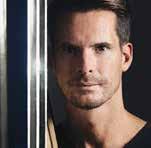
aso.org | @AtlantaSymphony | facebook.com/AtlantaSymphony
30 | meetthe
NIKOLAJ LUND
artists

Concerts of Thursday, October 19, 2023
8:00 PM
Saturday, October 21, 2023
8:00 PM
LIDIYA YANKOVSKAYA, conductor
AMJAD ALI KHAN, sarod
AMAAN ALI BANGASH, sarod
AYAAN ALI BANGASH, sarod
SHANE SHANAHAN, percussion
This program is supported in part by an award from the National Endowment for the Arts

GABRIELA LENA FRANK (b. 1972)
Elegía Andina (Andean Elegy) (2000) 11 MINS
AMJAD ALI KHAN (b. 1945)
Samaagam (2008) 45 MINS
Amjad Ali Khan, sarod
Amaan Ali Bangash, sarod
Ayaan Ali Bangash, sarod
Shane Shanahan, percussion
INTERMISSION 20 MINS
SERGEI PROKOFIEV (1891–1953)
Selections from Romeo and Juliet, Op. 64 (1938)
32 MINS
The Montagues and the Capulets (Suite 2, No. 1)
Juliet, the Young Girl (Suite 2, No. 2)
Balcony Scene (Suite 1, No. 6)
Morning Dance (Suite 3, No. 2)
Romeo at Juliet’s Grave (Suite 2, No. 7)
Romeo Resolves to Avenge Mercutio’s Death (Act 2 Finale)
Cortège with Tybalt’s Body (Act 2 Finale)
The use of cameras or recording devices during the concert is strictly prohibited. Please be kind to those around you and silence your mobile phone and other hand-held devices.
aso.org | @AtlantaSymphony | facebook.com/AtlantaSymphony
32 | oct19/21
Elegía Andina (Andean Elegy)
Elegía Andina is scored for two flutes (one doubling piccolo), two oboes, two clarinets, two bassoons, two horns, two trumpets, timpani, percussion and strings.
Gabriela Lena Frank
by Noel Morris Program Annotator
First and most recent ASO performance: June 3, 2021
Miguel Harth-Bedoya, conductor
Included in the Washington Post’s list of the 35 most significant women composers in history (August, 2017), identity has always been at the center of composer/pianist Gabriela Lena Frank’s music. Born in Berkeley, California (September, 1972), to a mother of mixed Peruvian/Chinese ancestry and a father of Lithuanian/Jewish descent, Frank explores her multicultural heritage most ardently through her compositions. Inspired by the works of Bela Bartók and Alberto Ginastera, Frank is something of a musical anthropologist. She has traveled extensively throughout South America and her pieces often reflect and refract her studies of Latin American folklore, incorporating poetry, mythology, and native musical styles into a Western classical framework that is uniquely her own.

From the composer:
Elegía Andina for Orchestra (2000) is dedicated to my older brother, Marcos Gabriel Frank. As children of a multicultural marriage (our father being Lithuanian-Jewish and our mother being Chinese-Peruvian-Spanish), our early days were filled with Chinese stir-fry cuisine, Andean nursery songs, and frequent visits from our New York-bred Jewish cousins. As a young piano student, my repertoire included not only my own compositions that carried overtones from Peruvian folk music but also rags of Scott Joplin and minuets by the sons of Bach. It is probably inevitable then that as a composer and pianist today, I continue to thrive on multiculturalism.
Elegía Andina (Andean Elegy) is one of my first written-down compositions to explore what it means to be of several ethnic persuasions, of several minds. It uses stylistic elements of Peruvian arca/ira zampoña panpipes (double-row panpipes, each row with its own tuning) to paint an elegiac picture of my questions. The flute part was particularly conceived with this in mind but was also inspired by the technical and musical mastery of Floyd Hebert, principal flutist of the Albany Symphony Orchestra. In addition, as already mentioned, I can think of none better to dedicate this work to than to “Babo,” my big brother — for whom Perú still waits.
33
notesontheprogram |
Samaagam
In addition to three solo sarods, Samaagam is scored for two flutes (one doubling alto flute), two clarinets, two bassoons, percussion and strings.
Samaagam comes from a Sanskrit word meaning confluence or flowing together. The aim of this work is to preserve the essence of both Indian and Western traditions so that they can flow into each other without artistic compromise. Amjad Ali Khan used the orchestration of Indian ensemble music in the pre-Bollywood era as inspiration and looked back to the ancient (i.e. pre-equal-temperament) Western tradition incorporating elements which, because of their antiquity, do not violate the rules of Indian music. The aim is through this process to joyfully explore the common musical “DNA” of both traditions.
Amjad Ali Khan has remarked: “every raga has a soul, and every musical note is the sound of God.” In Samaagam, 12 different ragas are presented. Some will make only a fleeting appearance; others will be explored for longer.
Samaagam is structured in three sections:
I. Ganesh Kalyan — Subhalakshmi — Swar Samir
II. Medley of Ragas: Maarva — Durga — Malkauns — Kaushik Dhwani — Kalavati — Basant Megh
III. Khamaj — Bhupali — Bhairavi
The ragas in the first section were all conceived and developed by Amjad Ali Khan, who feels that these ragas have been invoked rather than created.

His sons Amaan and Ayaan have written:
“New faces (ragas) come to his mind and ask him their names; as they have no names, Abba names them and they become new ragas. Listening to most of Abba’s ragas, one feels that they are traditional ragas which were born thousands of years ago, but for some reason, not discovered.”
Ganesh Kalyan made its first appearance at the Ganesh Festival in Pune in 1992. In Indian mythology, Ganesh, the elephant god, is the remover of obstacles and bringer of good luck. Also first presented in 1992, Subhalakshmi is a tribute to Mrs Subhalakshmi Khan, Amjad Ali Khan’s wife. Swar Samir, played here with a seven beat time cycle, made its first appearance in 1964, at the Harballabh Music Festival in the Punjab. It is inspired by two traditional ragas: Raga Rageshri and Raga Joge.
aso.org | @AtlantaSymphony | facebook.com/AtlantaSymphony
| encore 34
These are the first ASO performances.
The Medley of Ragas features 7 traditional ragas in quick succession and features a concertante group from within the orchestra in solo and group improvisation. Indian Ragas are designed to be played at different times of the day, and different seasons of the year. The majority of the ragas in Samaagam are evening or night-time ragas, however Maarva, which opens the medley, was originally conceived to be played at sunset, and Megh, which closes the medley during the rainy season. If performed expertly enough, it is said to induce rain!
The closing section initially explores the popular and sensual Raga Khamaj, which is said to “turn the flower red with passion.” This is followed by a glimpse of Raga Bhupali described as a woman “in expectation of her lover, nervously putting on her bracelets and moving hither and thither like a swing.” Samaagam finishes with an exploration of Raga Bhairavi. Bhairavi is perhaps the most popular raga in Indian music. It is traditionally a morning raga, played at the conclusion of an all-night concert. Due to its popularity (and the contemporary lack of nocturnal musical marathons!) it is accepted that Bhairavi can be performed at any time of the day or night. —David Murphy
Selections from Romeo and Juliet, Op. 64
These selections from Romeo and Juliet are scored for piccolo, two flutes, two oboes, English horn, two clarinets, bass clarinet, tenor saxophone, two bassoons, contrabassoon, four horns, cornet, three trumpets, three trombones, tuba, timpani, percussion, harp, piano, celeste and strings.
First ASO performances: April 10–13, 1980
Louis Lane, conductor
Most recent ASO performances: January 9–11, 2020
Robert Spano, conductor
“There was quite a fuss at the time about our attempts to give Romeo and Juliet a happy ending,” the composer recalled in 1941. Quite a fuss indeed. Sergei Prokofiev’s foray into literary blasphemy was too much for Soviet leadership. They compelled him to change his piece, and the world was none the wiser.
Decades later, Princeton scholar Simon Morrison stumbled upon a yellowed packet of papers at the Russian state archives. He recognized the composer’s handwriting and realized it was a manuscript of the famous ballet—a record of Prokofiev’s intentions before censors got a hold of it. And, yes, in the original version, the young lovers escape tragedy.
“It’s not triumphant,” according to American choreographer Mark Morris, who premiered the original version in 2008. “I’m implying they’re a constellation; they’re eternal. They’re not dead but gone.”
The saga of Prokofiev’s Romeo and Juliet would make for an excellent
encoreatlanta.com | 35
screenplay. As the story goes, he was living in the West and returned to the Soviet Union just as Stalin was preparing to murder millions of people. One wonders why.
In the early days of the Bolshevik regime, the revolutionariesturned-statesmen desired legitimacy on the world stage. As they labored to invent a new form of government, they zeroed in on the importance of soft power—gaining leverage through economic or cultural assets. Already, Russia’s best composers were living in the West. Rachmaninov had gone into exile. Stravinsky was the toast of Paris. Only Prokofiev was unsettled. Living in Europe, he struggled to gain footing as a composer. His music, which was edgy and experimental, fell flat at the box office. Out of necessity, he supported his family as a pianist—living out of a suitcase with little time for composition.
In 1924, he took a most unexpected turn. He became a Christian Scientist. With this new-found philosophy on life came a shift toward the more tuneful style of Peter and the Wolf (1936). According to biographer Simon Morrison, it also explained the happy ending in Romeo and Juliet.
“The fantastic energies in their relationship remained unaffected by potions and daggers,” Morrison wrote.
To Russian authorities, the composer was more matter-of-fact: “Living people can dance, the dying cannot.”
Just as Prokofiev embraced a new approach to music, Joseph Stalin decided to lure him back. Over ten years, Moscow courted the composer with concerts, unrestricted East-West access, a handsome apartment and commissions to write music.
Eventually, they issued an ultimatum: return to Russia or get stopped at the border and kiss Romeo and other projects goodbye. And so, in early 1936, Sergei Prokofiev and his wife, Lina, liquidated their Paris apartment and moved the family to Moscow.
It had been a little over a year since the assassination of Sergei Kirov (likely by Stalin’s henchmen); the Communist Party purged its numbers, and thousands faced arrest and execution. Despite enormous social upheaval, Romeo and Juliet bounced between the Kirov and Bolshoi ballet companies. In 1934, Vladimir Mutnikh, the head of the Bolshoi, invited the composer to work on his score at Polenovo, the summer getaway of the Bolshoi Theater. After a season of tennis and swimming, Prokofiev workshopped his score in Moscow, but authorities demurred. Objections to the unconventional ending began
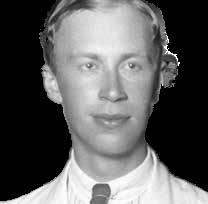
aso.org | @AtlantaSymphony | facebook.com/AtlantaSymphony
| encore 36
WIKIMEDIA
to bubble to the surface, and the Bolshoi postponed the performance. In 1937, Vladimir Mutnikh, the Bolshoi director, was arrested and shot; Romeo and Juliet disappeared from the schedule. In 1938, Party officials seized the composer’s travel documents, preventing him from attending a partial premiere in Brno, Czechoslovakia. Finally, on January 11, 1940, the Kirov Ballet danced the world premiere. Critics raved, and authorities presented the composer with the Stalin Prize. He never again traveled to the West.
encoreatlanta.com | 37
LIDIYA YANKOVSKAYA, CONDUCTOR
Lidiya Yankovskaya is a fiercely committed advocate for Slavic masterpieces, operatic rarities, and contemporary works on the leading edge of classical music. She has conducted more than 40 world premieres, including 17 operas, and her strength as a visionary collaborator has guided new perspectives on staged and symphonic repertoire from Carmen and Queen of Spades to Price and Prokofiev. Since her appointment as Music Director of the Chicago Opera Theater in 2017, Ms. Yankovskaya has led many Chicago premieres of recent works.
On the concert stage, recent engagements include the Chicago Symphony Orchestra, Los Angeles Philharmonic, New York Philharmonic, National Symphony Orchestra, Detroit Symphony Orchestra, Dallas Symphony Orchestra, Fort Worth Symphony Orchestra, and Julia Wolfe’s Anthracite Fields with Bang on a Can All-Stars and The Choir of Trinity Wall Street at Carnegie Hall. Ms. Yankovskaya has recently conducted operatic productions at the Houston Grand Opera, Seattle Opera, Santa Fe Opera, Spoleto Festival USA, Wolf Trap Opera, Washington National Opera and the Glimmerglass Festival. Ms. Yankovskaya is Founder and Artistic Director of the Refugee Orchestra Project, which proclaims the cultural and societal relevance of refugees through music, and has brought that message to hundreds of thousands of listeners around the world.
AMJAD ALI KHAN, SAROD

He was all of 6 years old when Amjad Ali Khan gave his first recital of Sarod and today he shoulders the sixth generation of inheritance in this legendary lineage. After his debut, the career path of this musical legend took the speed of light, and on its way, the Indian classical music scene was witness to regular and scintillating bursts of Raga supernovas. He is a recipient of the UNESCO Award, Padma Vibhushan (Highest Indian civilian award), and UNICEF’s National Ambassadorship. In 1995, Mr. Khan awarded the Gandhi UNESCO Medal in Paris for his composition “Bapukauns.” In 2003, the maestro received “Commander of the Order of Arts and letters” from the French Government and the Fukuoka Cultural Grand Prize in Japan in 2004.
He has been a visiting professor at Stanford University, Indiana University, York University, Washington University, Stony Brook, North Eastern and New Mexico University.

aso.org | @AtlantaSymphony | facebook.com/AtlantaSymphony
TODD ROSENBERG
| meettheartists 38
On the ninth anniversary of 9/11, Amjad Ali Khan gave a Peace Concert at the United Nations in New York in the presence of the UN Secretary General Ban-Ki-Moon.
He has been a regular performer at the Carnegie Hall, Royal Albert Hall, Royal Festival Hall, Kennedy Center, Sanctuary Hall (First Indian performer), House of Commons, Victoria Hall in Geneva, Chicago Symphony Center, Palais beaux-arts, Mozart Hall in Frankfurt, St. James Palace and the Opera House in Australia.

In 2008, his concerto for Sarod, Samaagam, premiered with the Scottish Chamber Orchestra, which was the latest embodiment of his unique ability to give new form to the purity and discipline of the Indian classical music tradition. In 2009, Mr. Khan was nominated for a Grammy award in the Best Traditional World Music Album category. “Samaagam” was released worldwide in April 2011 on Harmonia Mundi’s World Village label.
In 2014, Amjad Ali Khan, Amaan Ali Bangash and Ayaan Ali Bangash performed at the prestigious Nobel Peace Prize Ceremony in Oslo, Norway on as well as the Nobel Peace Prize Concert along with the lineup of Queen Latifa, Steven Tyler, Nuno Bettencourt and Laura Mvula.
The UN Day Concert 2018 featured Sarod virtuoso Amjad Ali Khan, accompanied by his sons Amaan Ali Bangash and Ayaan Ali Bangash, and the Refugee Orchestra Project conducted by Lidiya Yankovskaya, Conductor.
AMAAN ALI BANGASH, SAROD
Amaan Ali Bangash is the eldest son and disciple of the Sarod Maestro Amjad Ali Khan and grandson of Haafiz Ali Khan. He belongs to the seventh generation in an unbroken chain of the Senia Bangash School. He was initiated by his father into the fine art of Sarod playing and gave his first public performance at age eight. Amaan’s musical style is marked by its precision in tunefulness, bold and resonant strokes, along with tradition and continuity of Indian Classical Music. Amaan’s performances have evoked creditable applause. Today, Amaan is considered one of the finest Sarod players in the world and has obtained a very special place for himself among music enthusiasts across continents. He is an inspiration for the younger generation of musicians. He continues to enchant audiences with his virtuosity, sheer brilliance and charismatic stage presence.
encoreatlanta.com | 39
AYAAN ALI BANGASH, SAROD

Ayaan Ali Bangash represents the seventh generation of a musical lineage known as the Senia Bangash School. The younger son and disciple of the Sarod Maestro Amjad Ali Khan, Ayaan stepped into the world of music and the Sarod, at a very early age, with confidence, clarity, consistency and technical mastery all of which he learnt at his father’s knees. Ayaan gave his solo debut when he was eight years old and has been performing concerts in India and abroad since then. He has also assisted his illustrious father at concerts all over the world. His approach, vision and versatility make him an icon for the youth in the music industry. His contribution in making the Sarod a cross-over instrument in a variety of genres has projected him as an artist of high repute.
Amaan Ali Bangash & Ayaan Ali Bangash joined Gwen Stefani, Jon Bon Jovi for the Rock and Roll Hall of Fame Inductee and multiGRAMMY Award-winning musician Joe Walsh’s Vetsaid Charity Concert in December 2020. Amaan and Ayaan joined together with their father Amjad Ali Khan with Joe Walsh for a 3 song EP named ‘Prayers’ as a tribute to doctors and frontline workers during the pandemic.
SHANE SHANAHAN, PERCUSSION
Shane Shanahan has combined his studies of drumming traditions from around the world with his background in jazz, rock and Western art music to create his own unique, highly sought-after style. Since 2000, he has been touring around the globe performing with Yo-Yo Ma as a founding member of the genre-defying, Grammy® Award-winning Silkroad Ensemble and served as CoArtistic Director (2017-2020) and Learning Programs Advisor (2012-2020) for the organization.
In addition to his playing, his arrangements and compositions are featured on several of the group’s recordings and he can be heard and seen on Mr. Ma’s Grammy® Award-winning holiday CD/DVD release, Songs of Joy And Peace. Shane has performed and/or recorded with Bobby McFerrin, Aretha Franklin, James Taylor, Philip Glass, Alison Krauss, Deep Purple, and Chaka Khan, among others.
Shane’s dynamic performances have brought people to their feet in the greatest concert halls of the world, including Carnegie Hall, Lincoln Center, Concertgebouw, Santory Hall, Disney Hall, and the Hollywood Bowl. He has also performed twice for President

aso.org | @AtlantaSymphony | facebook.com/AtlantaSymphony
| meettheartists 40
and First Lady Obama, once at the White House and once at the Kennedy Center Honors.
A strong believer in the transformative power of education, Shane frequently presents workshops and clinics at the world’s leading universities, including Princeton, Harvard, Cornell, The Eastman School of Music, Juilliard, and the University of Michigan.
For the last several years Shane has been engaged in intensive work with students of all ages at the Lame Deer School on an Indian American Reservation in Montana.
encoreatlanta.com | 41
Concert of Wednesday, October 25, 2023
8:00 PM
PETER OUNDJIAN, conductor
JOSHUA BELL, violin
BEDŘICH SMETANA (1824–1884)
“Vltava” (The Moldau) from Má vlast
(My Fatherland) (1874)
MAX BRUCH (1838–1920)
Violin Concerto No. 1 in G Minor, Op. 26 (1866)
I. Vorspiel: Allegro moderato
II. Adagio
III. Finale: Allegro energico
Joshua Bell, violin
INTERMISSION
Selections from The Elements (2019–2023)
Kevin Puts (b. 1972): Earth
Edgar Meyer (b. 1960): Water
13 MINS
25 MINS
20 MINS
25 MINS
This concert is dedicated to RON & SUSAN ANTINORI in honor of their extraordinary support of the 2022/23 Annual Fund and The Robert Spano Fund for New Music.
Jake Heggie (b. 1961): Fire
Joshua Bell, violin
NIKOLAI RIMSKY-KORSAKOV (1844–1908)
Capriccio espagnol, Op. 34 (1887)
I. Alborada
II. Variazioni
III. Alborada
IV. Scena e Canto gitano
V. Fandango asturiano
16 MINS
The use of cameras or recording devices during the concert is strictly prohibited. Please be kind to those around you and silence your mobile phone and other hand-held devices.
aso.org | @AtlantaSymphony | facebook.com/AtlantaSymphony
42 | oct25
“Vltava” (The Moldau) from Má vlast (My Fatherland) “Vltava” is scored for piccolo, two flutes, two oboes, two clarinets, two bassoons, four horns, two trumpets, three trombones, tuba, timpani, percussion, harp and strings.
by Noel Morris Program Annotator
First ASO performances:
November 20–21, 1958
Thor Johnson, conductor
Most recent ASO performances:
November 11–13, 2010
Bedřich Smetana was born in a Czech village east of Prague in 1824, which says a lot about his identity. His parents named him Friedrich or “Fritz.” They spoke German in the home and sent their children to German-speaking schools—all thanks to the Battle of White Mountain in 1620, when Bohemian forces fell to the Habsburg emperor, Ferdinand II.
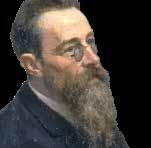
Hugh Wolff, conductor
From then on, the Czech nation endured a systematic program to scrub them of their language and cultural identity. Effectively, the Austrians eradicated Protestantism and established German as the official language. With the forced assimilation of middle- and upperclass people, imperial authorities destroyed tens of thousands of books. But the rural folk kept the Czech language alive.
Smetana attended high school in Prague, where he became friends with future leaders of the Czech National Revival. During the failed Prague Uprising of 1848, Smetana manned a barricade on the Charles Bridge over the Vltava and wrote rousing patriotic anthems to inspire his comrades. Part of a growing nationalist movement, he changed his name to Bedřich, the Czech form of Friedrich, and began learning his native tongue.
Hands down, “The Moldau” is his most popular orchestral piece. Though most of us know it by its German name, it is “The Vltava” in Czech, the river where Smetana climbed the barricade in 1848. The music’s inspiration came during an 1867 trek with a man named Mořic Anger, who conveyed the story to another friend who published the account:
Great and unforgettable was the impression made on Smetana by our outing to Čenek’s sawmill in Hirschenstein, where the Křemelná joins the River Vydra. It was there that the first ideas for his majestic symphonic poem Vltava were born and took shape.
Smetana provided a program note for his piece:
The composition depicts the course of the river, from its beginnings where two brooks, one cold, the other warm, join a stream, running through forests and meadows and a lovely countryside where merry feasts are celebrated; water-sprites dance in the moonlight; on nearby rocks can be seen the outline of ruined castles, proudly soaring into
43
notesontheprogram | REPIN
the sky. The river swirls through St. John Rapids and flows in a broad stream towards Prague. It passes Vyšehrad rock and disappears majestically into the distance.
Smetana annotated his score with signposts along the river’s course:
I. “The source of the Vltava” - Bar 1 - In 6/8, flutes evoke water trickling down from Hirschenstein, a mountain peak in the Bavarian Forest in modern-day Austria.
II. “Hunt in the woods” - Bar 80 - The river grows into a broad waterway. The horns and trumpets evoke the sound of hunting horns.
III. “Country wedding” - Bar 122 - The music drops into 2/4 for a spirited country dance.
IV. “Moonlight Dance of the Nymphs” - Bar 185 - the harp joins muted strings as they intone a slow, shimmering melody beneath the fluttering of flutes and clarinets.
V. “St. John’s Rapids” - Bar 271 - Timpani rolls and blaring brass conjure a treacherous stretch of whitewater. This section of the Vltava is now part of the Štěchovice Reservoir, constructed during WWII.
VI. “The Broad Flow of the Vltava” - Bar 333 - The original melody returns, now fast and furious, suggesting the untamed nature of a mighty river.
VII. “Motive of the “Vyšehrad” - Bar 359 - We reach the Czech capital of Prague. Smetana quotes a melody from his own tone poem Vyšehrad, depicting the medieval castle overlooking the Vltava.
In 1874, Bedřich Smetana began to experience hearing loss due to syphilis, which would later claim his sanity and his life. Within a few months, he was deaf. That same year, he began work on Má vlast (My Fatherland), a tribute to the Czech nationalist cause. Without the benefit of his hearing, he worked on the project until 1879, producing six tone poems based on the Czech identity: Vyšehrad (The High Castle), Šárka (a warrior maiden of Czech folklore), Z českých luhů a hájů (From Bohemia’s Woods and Fields), Tábor (a historic village in South Bohemia) and Blaník (a mountain and prominent site in Czech folklore). Vltava (The Moldau) is the second of the six works.
Violin Concerto No. 1 in G Minor, Op. 26
In addition to the solo violin, this concerto is scored for two flutes, two oboes, two clarinets, two bassoons, four horns, two trumpets, timpani and strings.
Music insiders refer to this piece as “the Bruch Violin Concerto.” It is a mainstay for violin soloists and a perennial audience
aso.org | @AtlantaSymphony | facebook.com/AtlantaSymphony
| encore 44
favorite; however, the fact that it’s known as the Bruch Violin Concerto speaks volumes about something that became a serious bone of contention for its composer: Bruch wrote three violin concertos, not one.
First ASO performance: March 3, 1953
Henry Sopkin, conductor
Robert Harrison, violin
In a letter to the publisher Fritz Simrock, he wrote: “Nothing compares to the laziness, stupidity and dullness of many German violinists. Every fortnight another one comes to me wanting to play the first concerto. I have now become rude; and have told them: ‘I cannot listen to this concerto any more—did I perhaps write just this one? Go away and once and for all play the other concertos, which are just as good, if not better.’”
Most recent ASO performance: May 21, 2022
Nicola Luisotti, conductor
Itzhak Perlman, violin
During his lifetime, Bruch was an important conductor, choral composer, and professor of music. He premiered his First Symphony at the age of 14 and wrote at least some of the material that would go into the Violin Concerto while still a teenager. He started to compose the Concerto in 1864, and conducted a premiere in 1866, but was dissatisfied with it. By then, he had caught the attention of the famous violinist Joseph Joachim, who helped him make revisions. In 1868, Joachim played the premiere of the piece as we know it today.
By the age of 30, Bruch had a huge hit on his hands and probably expected to grow into a life as an esteemed composer. But nothing he wrote compared to the popularity of his Violin Concerto No. 1. A century after his death, Bruch has been spared the fate of the one-hitwonder by two delightful, if not quite as popular works: the Scottish Fantasy, based on Scottish folk song, and Kol Nidrei, based on sacred Hebrew melodies.

Selections from The Elements
These are the first ASO performances.
The Elements is scored for piccolo, two flutes, two oboes, English horn, two clarinets, bass clarinet, two bassoons, contrabassoon, four horns, three trumpets, three trombones, tuba, timpani, percussion, harp, piano and strings.
I’m so excited to have the opportunity to premiere my new commissions project, The Elements. The idea for this unique endeavor was born during the early moments of the pandemic, and the work consists of five distinct pieces, each written by composers I greatly admire—Jake Heggie (“Fire”), Jennifer Higdon (“Air”), Edgar Meyer (“Water”), Jessie Montgomery (“Space”) and Kevin Puts (“Earth,” “Earth (reprise and finale)”). The process of working
WIKIMEDIA encoreatlanta.com | 45

| encore 46
Capriccio espagnol is scored for piccolo, two flutes, two oboes (one doubling English horn), two clarinets, two bassoons, four horns, two trumpets, three trombones, tuba, timpani, percussion, harp and strings.
Before we had Beats headphones and stereo systems, people wanting music in the home played instruments. As a result, the world produced many high-caliber amateur musicians—the pool from which the St. Petersburg Conservatory recruited its composition professor in 1871. At the time, Nikolai Rimsky-Korsakov was a naval officer who had fallen into a group of amateur composers, the “Russian Five.” Like a writers’ group, his friends offered pointers and encouragement. They were not academics.
“[I] did not even know the names … of chords,” he confessed. “It is shameful not to know such things and to learn of their existence from one’s own pupils.” Not one to back away from a challenge, “Rimsky,” who’d taken private music lessons from a young age, hit pause on composition and began intensive studies in harmony and counterpoint. He wrote dozens of exercises and sent his work to Tchaikovsky for corrections. (Tchaikovsky had been a member of the first graduating class.) As a military officer, Rimsky then became the inspector of naval bands and immersed himself in the intricacies of the different instruments. And so it went; the Conservatory’s composition professor taught himself.
Rimsky-Korsakov’s musical language is fundamentally Russian. While part of his family came from a long line of government officials and military brass (including one who was lovers with Catherine the Great), his grandmothers came from peasant stock, so to speak. They brought folk music into the home, while a neighboring monastery exposed him to Orthodox chant. At 12, when he enrolled in the naval academy in St. Petersburg, Rimsky attended operas by Rossini, Meyerbeer, and his musical hero, Mikhail Glinka, the father of Russian opera.
It was Glinka who first ventured into Spanish music. His opera Ruslan and Lyudmila had just flopped during its initial run. At about the same time, his marriage fell apart, and Glinka left town. Settling in Spain, he traveled the countryside collecting Spanish folksongs and noting the distinctive character of each region. Soon, he issued a series of Spanish-style compositions. A generation later, Rimsky-Korsakov followed Glinka’s footsteps and produced his Iberian homage,
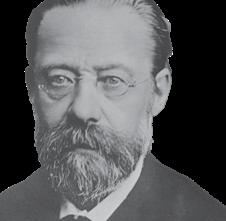 WIKIPEDIA
WIKIPEDIA
encoreatlanta.com | 47
These are the first ASO performances.
Capriccio espangol
Initially, Rimsky thought he’d write a showpiece for violin and orchestra. But other solo instruments crept into his imagination. He awarded the first solo to the clarinet. Then the violin takes a quick turn before the French and English horns rise to the top. The flutes, trumpets, oboe, cello, percussion, and trombones get their spot in the sun. (Given the technical demands of this piece, a number of these solos appear in orchestra auditions.) Ultimately, Capriccio espagnol spotlights the brilliant orchestral colorist who wrote it.
Rimsky-Korsakov based the work on Spanish folk music. The opening Alborada comes from Asturias in Northern Spain. Part of “Green Spain,” this wet, temperate coastal climate supports lush landscapes. Asturian natives trace their heritage to pre-Roman Celtic tribes who settled there. To this day, bagpipes are a popular folk instrument in Northern Spain. Traditionally, the Alborada is a wake-up call played at dawn on celebration days—hence the vigorous opening. In Capriccio espagnol, the Alborada comes repeatedly, interspersed with other folk songs, including a Roma melody and a fandango.
Rimsky-Korsakov composed Capriccio espagnol in 1887. His book Principles of Orchestration became essential reading for generations of composition students.
aso.org | @AtlantaSymphony | facebook.com/AtlantaSymphony
| encore 48


50

encoreatlanta.com | 51
ASO | SUPPORT (cont.)
Mr. Kenneth M. Neighbors & Ms. Valdoreas May
The Norfolk Southern Corporation
Margaret H. Petersen
David F. & Maxine A.* Rock
Thomas & Lynne Saylor
The Simmons Foundation
John & Yee-Wan Stevens
Mr. & Mrs. Edward W.
Stroetz, Jr.
Stephen & Sonia Swartz
Mr. G. Kimbrough Taylor & Ms. Triska Drake
George & Amy Taylor∞
Mr. Paul E. Viera & Ms. Gail O’Neill
Dr. & Mrs. James O. Wells, Jr.
Kiki Wilson
$7,500+
Jack & Helga Beam∞
Karen & Rod Bunn
Patricia & William Buss∞
Mark Coan & Family
Ms. Diane Durgin
Sally W. Hawkins
Grace Ihrig°
Ann & Brian Kimsey
Jason & Michelle Kroh
Mr. Robert M. Lewis, Jr.
Elvira & Jay Mannelly
Berthe & Shapour Mobasser
Mrs. Kay Adams* & Mr. Ralph Paulk°
Hamilton & Mason Smith
Tom & Ani Steele
Ms. Juliana T. Vincenzino
Drs. Jonne & Paul Walter
Mr. David J. Worley & Ms. Bernadette Drankoski
Camille W. Yow
$5,000+
A Friend of the Symphony(3)
Dr. & Mrs. Marshall Abes
Azalea City Chapter of Links
Dr. Evelyn R. Babey
Lisa & Joe Bankoff
Asad Bashey
Herschel Beazley
Meredith Bell
Dr. & Mrs. Jerome B.
Blumenthal
Mrs. Sidney W. Boozer
Carol Brantley & David Webster
Margo Brinton & Eldon Park
Jacqueline A. & Joseph E. Brown, Jr.
Judith D. Bullock
CBH International, Inc
John Champion & Penelope Malone
Mr. & Mrs. Miles R. Cook
William & Patricia Cook
Carol Comstock & Jim Davis
Janet & John Costello
Dillon Production Services
Mr. & Mrs. Paul H. Dimmick
Xavier Duralde & Mary Barrett
Dieter Elsner & Othene Munson
Robert S. Elster Foundation
Dr. & Mrs. Carl D. Fackler
Ellen & Howard Feinsand
Mr. & Mrs. William A. Flinn
Bruce W. & Avery C. Flower∞
Mr. David L. Forbes
Marty & John Gillin°
Mary* & Charles Ginden
Mr. & Mrs. Richard Goodsell∞
Melanie & Tucker Green
Martha Reaves Head
Azira G. Hill
Tad & Janin Hutcheson
Mr. Justin Im & Dr. Nakyoung Nam
Aaron & Joyce Johnson
Mr. & Mrs. Baxter Jones
Mr. Jonathan Kamenear
Paul* & Rosthema Kastin
Mr. Charles R. Kowal
Ms. Eunice Luke
Dr. & Mrs. Ellis L. Malone
Ms. Erin M. Marshall
Mr. & Mrs.
Christopher D. Martin
Belinda & Gino Massafra
The Fred & Sue McGehee
Family Charitable Fund
Ed & Linda McGinn°
Ms. Erica McVicker
Mr. Bert Mobley
Mr. Cesar Moreno & Mr. Greg Heathcock
Sue Morgan∞
Jane Morrison∞
Music Matters
Mr. Thomas Nightingale
Ms. Bethani Oppenheimer
Mr. & Mrs. Edmund F.
Pearce, Jr.°
The Hellen Plummer
Charitable Foundation, Inc.
Dr. & Mrs. John P. Pooler
John H. Rains
Mr. & Mrs. Joel F. Reeves
Cammie & John Rice
Vicki & Joe Riedel
Ms. Felicia Rives
Betsy & Lee Robinson
Ms. Frances A. Root
Mr. & Ms. Joseph A.
Roseborough
Tiffany & Rich Rosetti∞
John T. Ruff
Katherine Scott
Mallie Sharafat
Suzanne Shull
Gerald & Nancy Silverboard
Baker & Debby Smith
Ms. Cynthia Smith
Dr. K. Douglas Smith
Mr. & Mrs.
Peter Stathopoulos
In memory of Elizabeth
B. Stephens by Powell, Preston & Sally∞
Dede & Bob Thompson
Mr. & Mrs. Peter Toren
Trapp Family
Burton Trimble
Chilton & Morgan* Varner
Amy & Robert Vassey
Alan & Marcia Watt
Mr. Nathan Watt
Ruthie Watts
Mr. & Mrs. Robert L. Welch
Dr. Nanette K. Wenger
Suzanne B. Wilner
Mr. & Mrs. M. Beattie Wood
$3,500+
A Friend of the Symphony(2)
Drs. Jay & Martin
Beard-Coles
Mr. John Blatz
Ms. Johanna Brookner
Mr. & Mrs. Dennis M. Chorba
Liz & Charlie Cohn°
Ned Cone & Nadeen Green
Jean & Jerry Cooper
Mr. Ramsey Fahs
Mr. & Mrs. Louis Gump
Deedee & Marc* Hamburger
Barbara M. Hund
Cameron Jackson°
Mr. W. F. & Dr. Janice Johnston
Wolfgang* & Mariana Laufer
Ari & Fara Levine°
Deborah & William Liss°
Martha & Reynolds
McClatchey
In Memory of Dr. Frank S. Pittman III
Ms. Kathy Powell
Leonard Reed
Mrs. Susan H. Reinach
S.A. Robinson
Mr. David Roemer
Dr. & Mrs. Rein Saral
Donna Schwartz
Ms. Martha Solano
Mr. & Mrs. Art Waldrop
Mr. & Mrs. Rhys T. Wilson
Ms. Sonia Witkowski
$2,000+
A Friend of the Symphony(2)
aso.org | @AtlantaSymphony | facebook.com/AtlantaSymphony
| encore 54
2492 Fund
Mr. & Dr. Paul Akbar
Mr. James L. Anderson
Ms. Debra Atkins & Ms. Mary Ann Wayne
The Atlanta Music Club
Anthony Barbagallo & Kristen Fowks∞
Ms. Susan Bass & Mr. Tom Bradford
Dr. Laura Beaty
Bell Family Foundation for Hope Inc
Susan & Jack Bertram
Catherine Binns & Jim Honkisz*
Leon & Joy Borchers
Andrew & Elissa Bower°
Martha S. Brewer
Harriet Evans Brock
Dr. Aubrey Bush & Dr. Carol Bush
Mr. & Mrs. Walter K. Canipe
Betty Fuller Case
Mr. James Cobb
Coenen-Johnson
Foundation
Susan S. Cofer
Malcolm & Ann Cole
Ralph & Rita Connell
Matt & Kate Cook
Mrs. Nancy Cooke
Mary Carole Cooney & Henry R. Bauer, Jr.
Ms. Elizabeth Wiggs Cooper & Mr. Larry Cooper
R. Carter & Marjorie A.
Crittenden Foundation
Mr. & Mrs. Paul M. Cushing
Dr. & Mrs. F. Thomas Daly, Jr.
Mr. & Mrs. Kyle Dasher
Priscilla Davis
Delta Community
Credit Union
Mr. & Mrs. Graham Dorian
Mr. & Mrs. Robert G. Edge
Diana Einterz
Erica Endicott & Chris Heisel
Mr. & Mrs. Taylor Fairman
Mr. & Mrs. Paul G. Farnham
Mr. & Mrs. Massoud Fatemi
Dr. Karen A. Foster
Annie Frazer & Jen Horvath
Ms. Elizabeth C. French
Gaby Family Foundation
Mr. & Mrs. Sebastien Galtier
Raj & Jyoti Gandhi
Family Foundation
Mr. & Mrs. C. Ben Garren
Sandra & John Glover
Mrs. Janet D. Goldstein
Mr. & Mrs. Daniel P. Griffin
Richard & Debbie Griffiths
Mr. & Mrs. George Gunderson
Phil & Lisa Hartley
Mr. & Mrs. Steve Hauser°
Mr. & Mrs. John Hellriegel
Ms. Elizabeth Hendrick
Ms. Ann Herrera & Ms. Mary M. Goodwin
Mr. Kenneth & Ms. Colleen Hey
Sarah & Harvey Hill, Jr.°
Laurie House Hopkins & John D. Hopkins
James & Bridget Horgan°
Ms. & Mr. Carli Huband
Richard & Linda Hubert
Dona & Bill Humphreys
International Women’s
Forum
Nancy & John Janet
Ms. Rebecca Jarvis
Mrs. Gail Johnson
Patron Leadership (PAL) Committee
We give special thanks to this dedicated group of Atlanta Symphony Orchestra donorvolunteers for their commitment to each year’s annual support initiatives:
Cecile M. Jones
Lana M. Jordan
William L. & Sally S. Jorden
Teresa M. Joyce, Ph.D
Mona & Gilbert Kelly°
Mr. Lewis King
Mr. & Mrs. Theodore J. Lavallee, Sr.
Lillian Balentine Law
Mr. & Mrs. Chris Le
Mr. & Mrs. J. David Lifsey
Jun-Ching Lin & Helen Porter
Azy Lotfi & Max Lotfi
Dr. Marcus Marr
Mrs. Sam Massell
Dr. & Mrs. Douglas Mattox
In Memory of Pam McAllister
Mr. & Mrs. James McClatchey
Birgit & David McQueen
Anna & Hays Mershon
Mr. & Mrs.
Thomas B. Mimms, Jr.
Mrs. Pat Mitchell & Mr. Scott Seydel
Mr. Charles Morn
Janice & Tom Munsterman∞
Melanie & Allan Nelkin
Agnes V. Nelson
Gary R. Noble, MD & Joanne Heckman
Donald S. Orr & Marcia K. Knight
Mr. & Mrs.
Solon P. Patterson
Mr. & Mrs.
Jonathan K. Peterson
Linda Matthews chair
Kristi Allpere
Helga Beam
Bill Buss
Pat Buss
Kristen Fowks
Deedee Hamburger
Judy Hellriegel
Ponce de Leon Music Store
Mr. & Ms.
Douglas R. Powell
Sharon & David Schachter°
Drs. Bess Schoen & Andrew Muir
Drs. Lawrence & Rachel Schonberger
Nick & Annie Shreiber
Helga Hazelrig Siegel
Diana Silverman
Jeanne S. & S. James Simpson
The Society, Inc
The Alex & Betty Smith Donor-Advised Endowment Fund
Anne-Marie Sparrow
Peggy & Jerry Stapleton
James & Shari Steinberg
Richard M. Stormont*
Dr. & Mrs. John P. Straetmans
Beth & Edward Sugarman
Kay R Summers
Tegna Foundation
Ms. Linda F. Terry
Dr. Brenda G. Turner
Vogel Family Foundation
Dr. James L. Waits
Mr. Charles D. Wattles & Ms. Rosemary C. Willey
David & Martha West
Russell F. Winch & Mark B. Elberfeld
Zaban Foundation, Inc.
Herbert* & Grace Zwerner
Nancy Janet
Belinda Massafra
Sally Parsonson
June Scott
Milt Shlapak
Jonne Walter
Marcia Watt
°We are grateful to these donors for taking the extra time to acquire matching gifts from their employers. *Deceased
encoreatlanta.com | 55
HENRY SOPKIN CIRCLE
Named for the Atlanta Symphony Orchestra’s founding Music Director, the HENRY SOPKIN CIRCLE celebrates cherished individuals and families who have made a planned gift to the Atlanta Symphony Orchestra. These special donors preserve the Orchestra’s foundation and ensure success for future generations.
A Friend of the Symphony (22)
Madeline* & Howell E. Adams, Jr.
Mr.* & Mrs.* John E. Aderhold
Mr. & Mrs. Paul Aldo
Mr. & Mrs. Ronald R. Antinori
Dr. & Mrs. William Bauer
Helga Beam
Mr. Charles D. Belcher *
Neil H. Berman
Susan & Jack Bertram
Mr.* & Mrs.* Karl A. Bevins
The Estate of Donald S. & Joyce Bickers
Ms. Page Bishop*
Mr.* & Mrs.* Sol Blaine
John Blatz
Rita & Herschel Bloom
The Estate of Mrs.
Gilbert H. Boggs, Jr.
W. Moses Bond
Mr.* & Mrs. Robert C. Boozer
Elinor A. Breman*
Carol J. Brown
James C. Buggs*
Mr. & Mrs.* Richard H. Burgin
Hugh W. Burke*
Mr. & Mrs. William Buss
Wilber W. Caldwell
Mr. & Mrs. C. Merrell Calhoun
Cynthia & Donald Carson
Mrs. Jane Celler*
Lenore Cicchese*
Margie & Pierce Cline
Dr. & Mrs. Grady S. Clinkscales, Jr.
Suzanne W. Cole Sullivan
Robert Boston Colgin
Mrs. Mary Frances Evans Comstock*
Miriam* & John A.* Conant
Dr. John W. Cooledge
Mr. & Mrs. William R. Cummickel
Bob* & Verdery* Cunningham
Mr. Richard H. Delay & Dr. Francine D. Dykes
John R. Donnell
Dixon W. Driggs*
Pamela Johnson Drummond
Mrs. Kathryn E. Duggleby
Catherine Warren Dukehart*
Ms. Diane Durgin
Arnold & Sylvia Eaves
Mr. & Mrs. Robert G. Edge
Geoffrey G. Eichholz*
Elizabeth Etoll
Mr. Doyle Faler
Brien P. Faucett
Dr. Emile T. Fisher*
Moniqua N Fladger
Mr. & Mrs. Bruce W. Flower
A. D. Frazier, Jr.
Nola Frink*
Betty* & Drew* Fuller
Sally & Carl Gable
William & Carolyn Gaik
Dr. John W. Gamwell*
Mr.* & Mrs.* L.L. Gellerstedt, Jr.
Ruth Gershon & Sandy Cohn
Micheline & Bob Gerson
Max Gilstrap
Mr. & Mrs. John T. Glover
Mrs. David Goldwasser
Robert Hall Gunn, Jr. Fund
Billie & Sig Guthman
Betty G.* & Joseph* F. Haas
James & Virginia Hale
Ms. Alice Ann Hamilton
Dr. Charles H. Hamilton*
Sally & Paul* Hawkins
John* & Martha Head
Ms. Jeannie Hearn*
Barbara & John Henigbaum
Jill* & Jennings* Hertz
Mr. Albert L. Hibbard
Richard E. Hodges
Mr.* & Mrs. Charles K.
Holmes, Jr.
Mr.* & Mrs.* Fred A. Hoyt, Jr.
Jim* & Barbara Hund
Clayton F. Jackson
Mary B. James
Nancy Janet
Mr. Calvert Johnson & Mr. Kenneth Dutter
deForest F. Jurkiewicz*
Herb* & Hazel Karp
Anne Morgan & Jim Kelley
Bob Kinsey
James W.* & Mary Ellen*
Kitchell
Paul Kniepkamp, Jr.
Vivian & Peter de Kok
Miss Florence Kopleff*
Mr. Robert Lamy
James H. Landon
Ouida Hayes Lanier
Lucy Russell Lee* & Gary Lee, Jr.
Ione & John Lee
Mr. Larry M. LeMaster
Mr.* & Mrs.* William C. Lester
Liz & Jay* Levine
Robert M. Lewis, Jr.
Carroll & Ruth Liller
Ms. Joanne Lincoln*
Jane Little*
Mrs. J. Erskine Love, Jr.*
Nell Galt & Will D. Magruder
K Maier
John W. Markham*
Mrs. Ann B. Martin
Linda & John Matthews
Mr. Michael A. McDowell, Jr.
Dr. Michael S. McGarry
Richard & Shirley McGinnis
John & Clodagh Miller
Ms. Vera Milner
Mrs. Gene Morse*
Ms. Janice Murphy*
Mr. & Mrs. Bertil D. Nordin
Mrs. Amy W. Norman*
Galen Oelkers
Roger B. Orloff

Barbara D. Orloff
Dr. Bernard* & Sandra Palay
Sally & Pete Parsonson
James L. Paulk
Ralph & Kay* Paulk
Dan R. Payne
Bill Perkins
Mrs. Lela May Perry*
Mr.* & Mrs. Rezin E. Pidgeon, Jr.
Janet M. Pierce*
Reverend Neal P. Ponder, Jr.
Dr. John B. Pugh
William L.* & Lucia Fairlie*
Pulgram
Ms. Judy L. Reed*
Carl J. Reith*
Mr. Philip A. Rhodes
Vicki J. & Joe A. Riedel
Helen & John Rieser
Dr. Shirley E. Rivers*
David F. & Maxine A.* Rock
Glen Rogerson*
Tiffany & Richard Rosetti
Mr.* & Mrs.* Martin H. Sauser
Bob & Mary Martha Scarr
Mr. Paul S. Scharff & Ms. Polly G. Fraser
Dr. Barbara S. Schlefman
Bill & Rachel Schultz
Mrs. Joan C. Schweitzer
June & John Scott
Edward G. Scruggs*
Dr. & Mrs. George P. Sessions
Mr. W. G. Shaefer, Jr.
Charles H. Siegel*
Mr. & Mrs. H. Hamilton Smith
Mrs. Lessie B. Smithgall*
Ms. Margo Sommers
Elliott Sopkin
Elizabeth Morgan Spiegel
Mr. Daniel D. Stanley
Gail & Loren Starr
Peter James Stelling*
Ms. Barbara Stewart
Beth & Edward Sugarman
C. Mack* & Mary Rose* Taylor
Isabel Thomson*
Jennings Thompson IV
Margaret* & Randolph* Thrower
Kenneth & Kathleen Tice
Mr. H. Burton Trimble, Jr.
Mr. Steven R. Tunnell
Mr. & Mrs. John B. Uttenhove
Mary E. Van Valkenburgh
Mrs. Anise C. Wallace
Mr. Robert Wardle, Jr.
Mr. & Mrs. John B. White, Jr.
Adair & Dick White
Mr. Hubert H. Whitlow, Jr.*
Sue & Neil* Williams
Mrs. Frank L. Wilson, Jr.
Mrs. Elin M. Winn
Ms. Joni Winston
George & Camille Wright
Mr.* & Mrs.* Charles R. Yates
aso.org | @AtlantaSymphony | facebook.com/AtlantaSymphony
| encore 56
*Deceased
EXECUTIVE
Jennifer Barlament executive director
Alvinetta Cooksey executive & finance assistant
Dautri Erwin executive assistant
Emily Fritz-Endres executive management fellow
ARTISTIC
Gaetan Le Divelec vice president, artistic planning
Hannah Davis
choral artistic administrator
RaSheed Lemon aso artist liaison
Ebner Sobalvarro artistic administrator
EDUCATION & COMMUNITY ENGAGEMENT
Sarah Grant senior director of education
Ryan Walks
talent development program manager
Elena Gagon coordinator of education & community engagement
Elizabeth Graiser manager of operations & asyo
OPERATIONS
Victoria Moore
interim general manager
Paul Barrett
senior production stage manager
Sara Baguyos
associate principal librarian
Richard Carvlin
stage manager
Kelly Edwards
director of operations
Renee Hagelberg manager of orchestra personnel
Joshua Luty principal librarian
MARKETING & COMMUNICATIONS
Ashley Mirakian vice president, marketing & communications
Delle Beganie content & production manager
Leah Branstetter director of digital content
Meredith Chapple marketing coordinator
Adam Fenton director of multimedia technology
Will Strawn director of marketing, live
Caitlin Buckers marketing manager, live
Lisa Eng creative services manager, live
Mia Jones-Walker marketing manager
Camille McClain director of marketing & communications
Rob Phipps director of creative services
Bob Scarr
archivist & research coordinator
Madisyn Willis marketing manager
SALES & REVENUE MANAGEMENT
Russell Wheeler
vice president, sales & revenue management
Nancy James front of house supervisor
Erin Jones
director of sales & audience development
Jesse Pace
senior manager of ticketing & patron experience
Dennis Quinlan manager, business insights & analytics
Robin Smith patron services & season ticket associate
Jake Van Valkenburg sales coordinator
Milo McGehee guest services coordinator
Anna Caldwell guest services associate ATLANTA SYMPHONY HALL LIVE
Nicole Panunti
vice president, atlanta symphony hall live
Michelle Hannaford associate director of events & hospitality
Christine Lawrence associate director of guest services
Jessi Lestelle event manager
Michael Tamucci
associate director of performance management, atlanta symphony hall live
Dan Nesspor
ticketing manager, atlanta symphony hall live
Liza Palmer event manager
FINANCE & ADMINISTRATION
Susan Ambo
executive vice president & cfo
Kimberly Hielsberg vice president of finance
Brandi Hoyos
director of diversity, equity & inclusion
April Satterfield controller
Brandi Reed staff accountant DEVELOPMENT
Grace Sipusic vice president of development
Cheri Snyder senior director of development
William Keene director of annual giving
James Paulk
senior annual giving officer
Renee Contreras associate director, development communications
Esther Kim development associate, major gifts
Dana Parness
manager of individual giving & prospect research
Sharveace Cameron senior development associate
Sarah Wilson development operations associate
Jennifer Tinker manager of corporate partnerships
| STAFF encoreatlanta.com | 57
ASO






aso.org | @AtlantaSymphony | facebook.com/AtlantaSymphony | encore 58
ASO | CORPORATE & GOVERNMENT SUPPORT This program is supported in part by an award from the National Endowment for the Arts.


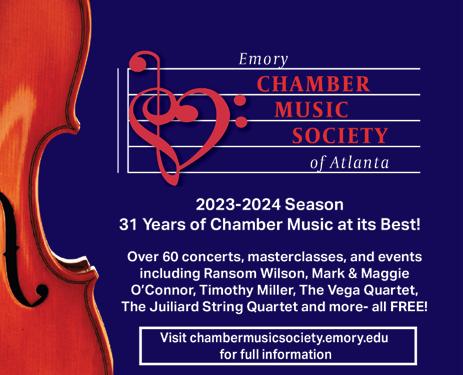

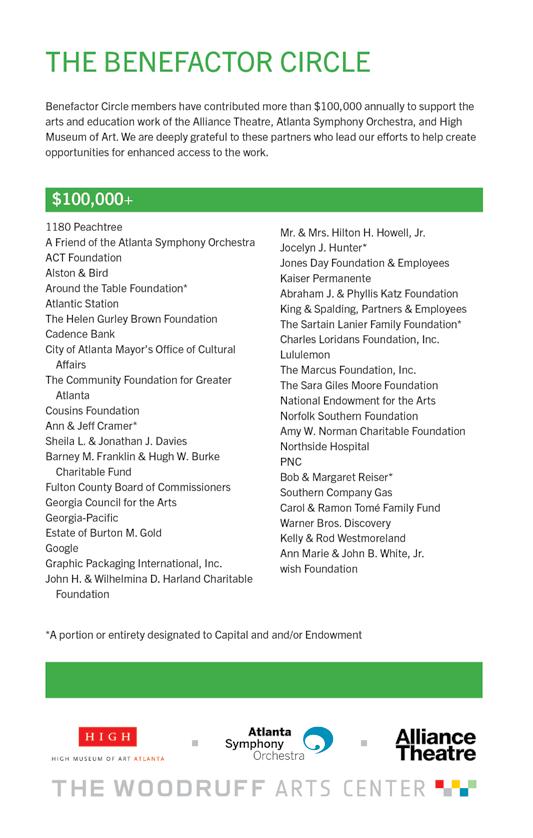
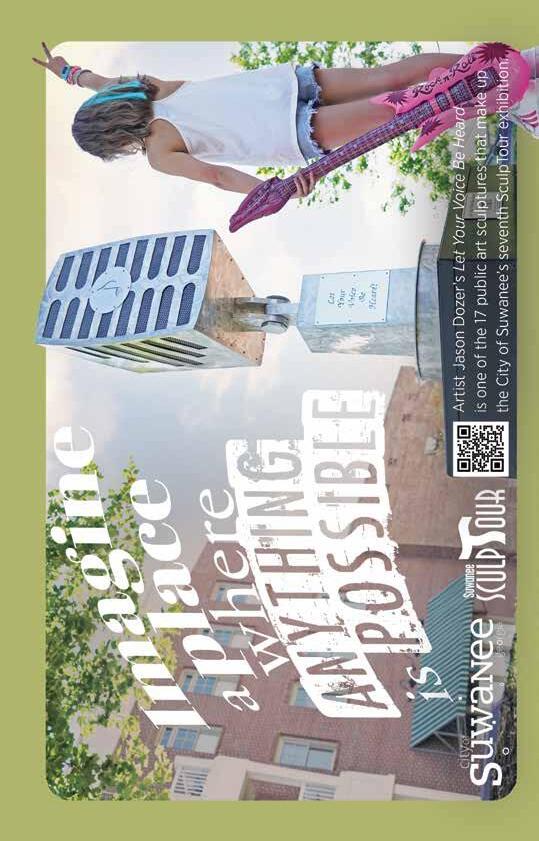




















 By Holly Hanchey
By Holly Hanchey























 WIKIPEDIA
WIKIPEDIA











